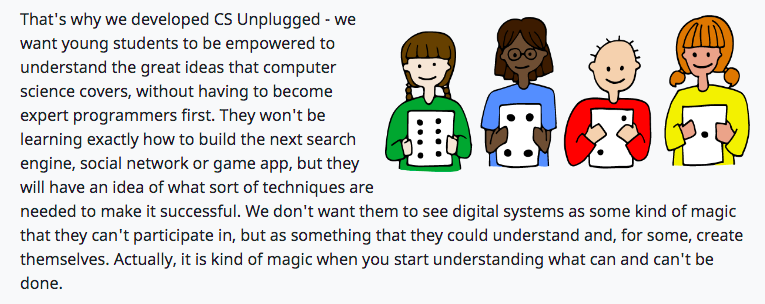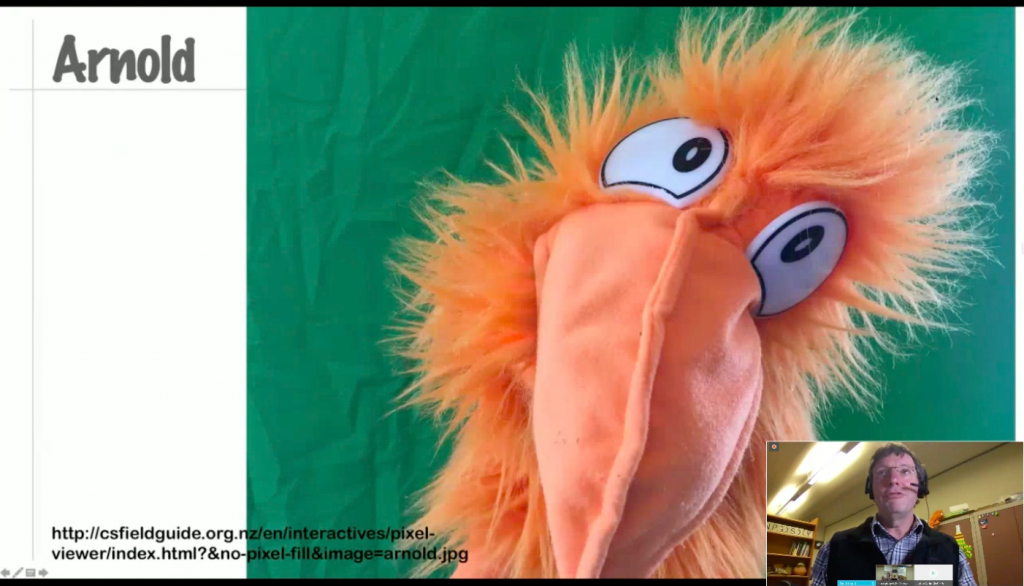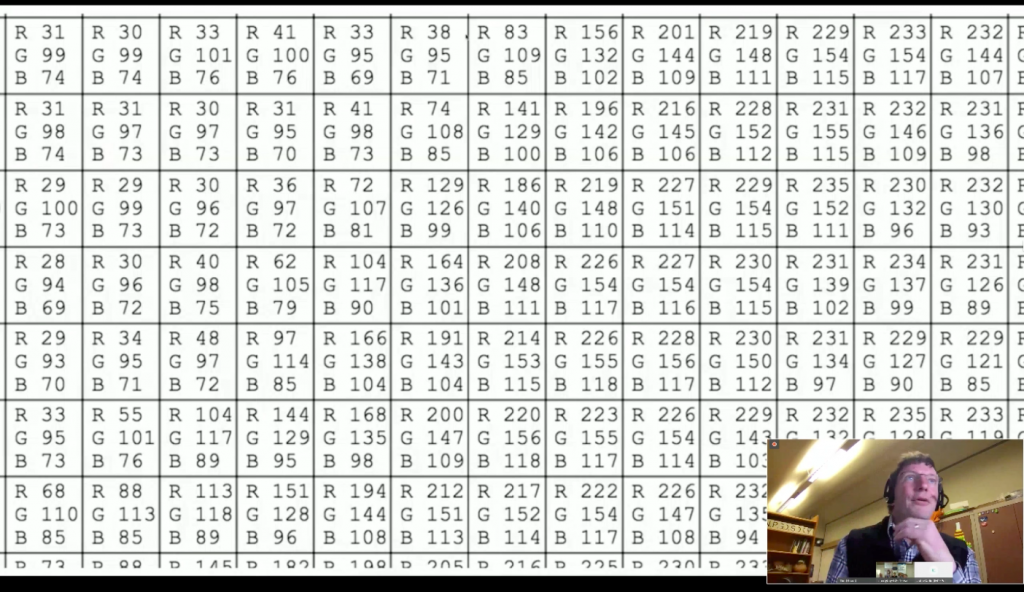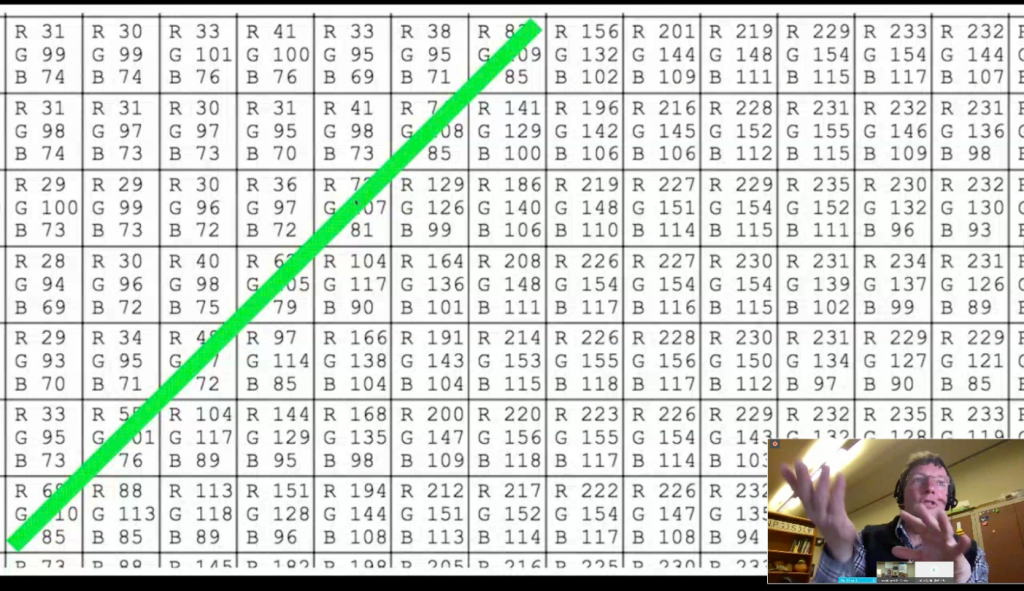In this week’s blog I’m reflecting on a webinar I attended last week Digital Technologies: It’s not all about coding hosted by the CSIRO and lead by Professor Tim Bell from the university of Canterbury, New Zealand. There is a lot of mathematics within Digital Technologies. Making these connections, particularly when implementing a STEM approach to integrated learning, is essential for students in developing their understanding of how the many parts work together to communicate and solve problems.
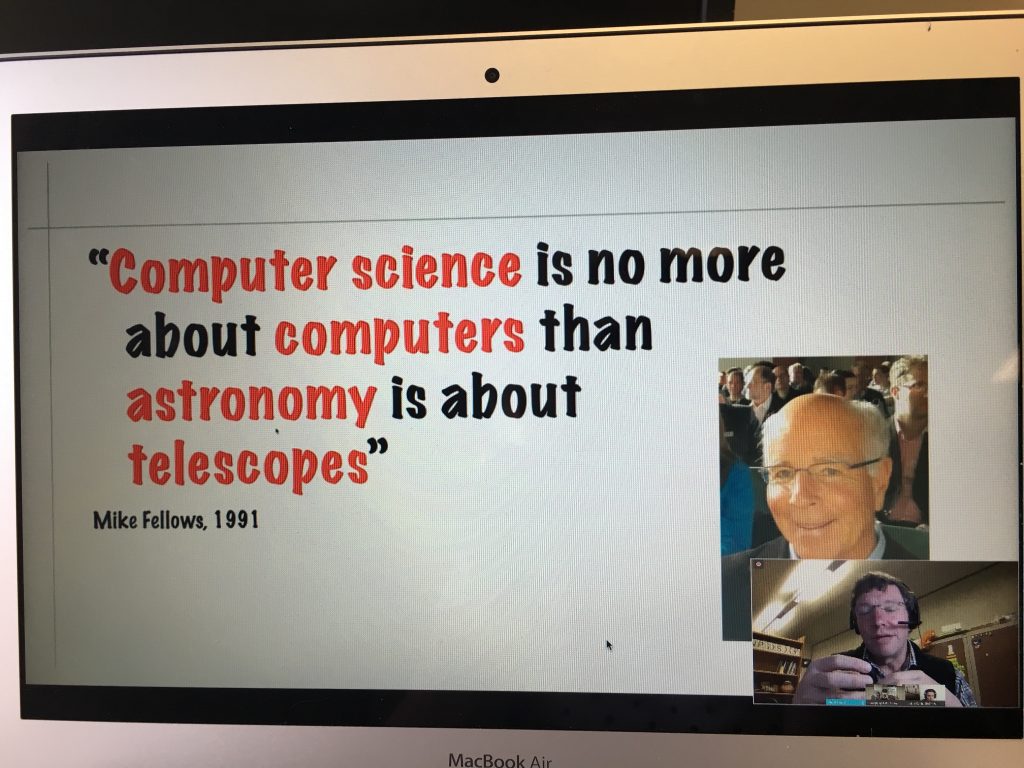
I had previously heard Tim speak before on his Computer Science Unplugged revolutionary way of approaching teaching students how to program and code. His focus is on teaching the skills and knowledge of computer science, without a computer, through engaging games, puzzles and problems. For me this makes an important link to how students learn in general, concrete – visual/ representational – abstract (Based on Kolb’s learning theory). Sometimes I think we move straight to the abstract (on computer coding and programming) before students fully understand how and why things happen and how coding is only one part of the problem solving process.
Image sourced from https://sharonvogt.wordpress.com/tag/learning-theory
Image sourced from https://csunplugged.org/en/what-is-computer-science/
So here are my big take-away messages from Tim Bell’s presentation:
We don’t write code for computers, we write code for people
Tim talked about the fact that people are the most important part of coding. The end users are people, humans and the goal is to help the person. Coding enables these things to happen, but you can create a code for the wrong purpose if you don’t address the human user at the end and how they interact with the app or digital device.
Organising data is an essential part of digital technologies
Being able to organise your work or your data in some logical and systematic way for understanding, communicating and finding patterns is just as important in Digital Technology as it is in mathematics. And in fact, they are one in the same as a way of thinking. Even simply organising data alphabetically or numerically (for example your files and folders on your computer) aid in being able to sort data, find patterns or rules and interpret the data more easily.
There are many algorithms to solve the one problem
Programming is about finding the right algorithm for the data. Finding elegant, efficient ways to solve problems that take the least amount of steps and use the least amount of resources and that are fit-for-purpose. For example, if the algorithm works, but takes a long time to process on your phone, your battery may run out. There are many algorithms for achieving the same thing. Once you pick the best algorithm, then you can write the program that implements it. This reminds me of the toolbox of strategies we want students to develop in mathematics, many of the strategies will work, it’s about selecting the right one for the problem at hand.
Algorithms act on data
Tim showed some lovely examples of how algorithms act on data and how our world, like in the case of digital images, are broken down into numerical values. He provided an example of an image where the numerical values represented different colour mixes and talked about how you could explore this with students. Having students look for the patterns in the numbers and when the changes occur to see how the algorithms are used to make sense of the data. These numerical values can then be coded and used within a program to decide which pixel is which colour.
The greatest resource is time
“It’s very tempting for schools to spend money on gadgets … but … it should be possible to teach things well without any great financial investment.”
Professor Tim Bell
There was a Q&A section at the end of the webinar and someone asked the question about resources to invest in. What type or what sort of digital technology or robotics did Tim recommend. His answer was your time. It doesn’t matter what type of robotics you have, or even if you have them at all. Tim’s focus was on the time teachers give to students to explore their thinking, planning, ideating and programming off computer. His advice (that is supported by research) is to get the kids doing some unplugged activities to get the students thinking, and then get them on the computer doing some programming. Tim said his website is not a full program, “it’s a whole lot of seasoning to add to what you are already doing.”
“We think that by exploring things away from the computer kind of helps them to think of the bigger picture whereas if you are only on the computer then you see programming perhaps as a set of things that you have to do.”
Professor Tim Bell
Tim mentioned that in one recent study where half the students completed 8 weeks of on-computer programming (Scratch) and half completed 4 weeks unplugged then 4 weeks on-computer (Scratch) that by the end both groups were equally good at programming. What was interesting and important to note was that the students who spent time completing the unplugged activities had higher self-efficacy, felt they knew what they were doing better and used more programming constructs.
It was only a short, 1 hour webinar but it confirm much of what I already believed about students’ learning and specifically about students’ learning in digital technologies. That just like mathematics, and other subjects, students need experiences with concrete and visual representations and time to explore ideas prior to being introduced to some-what abstract concepts.
References
Bell, T., Rosamond, F., & Casey, N. (2012). Computer science unplugged and related projects in math and computer science popularization. In The multivariate algorithmic revolution and beyond (pp. 398-456). Springer, Berlin, Heidelberg.
Computer programming unplugged https://csunplugged.org/en/
Kolb, D. A. (1984). Experiential learning: Experience as the source of learning and development (Vol. 1). Englewood Cliffs, NJ: Prentice-Hall.

